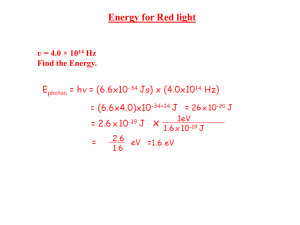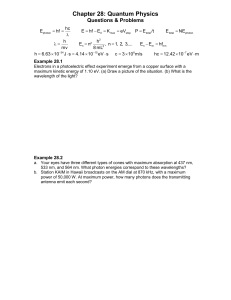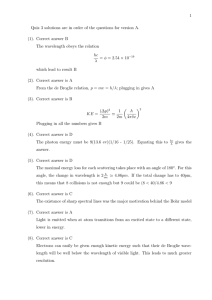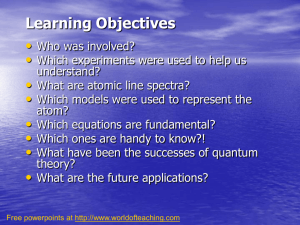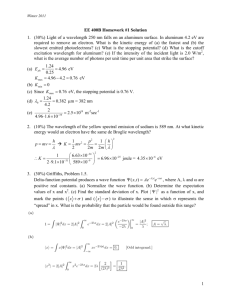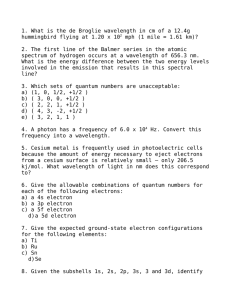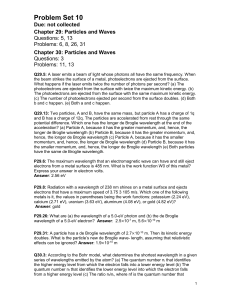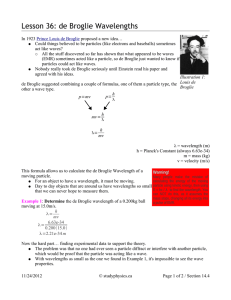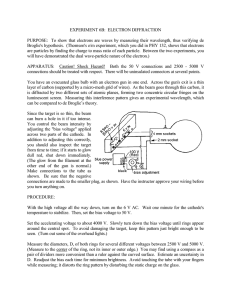Thermal de Broglie Wavelength—C.E. Mungan, Spring 2009
advertisement
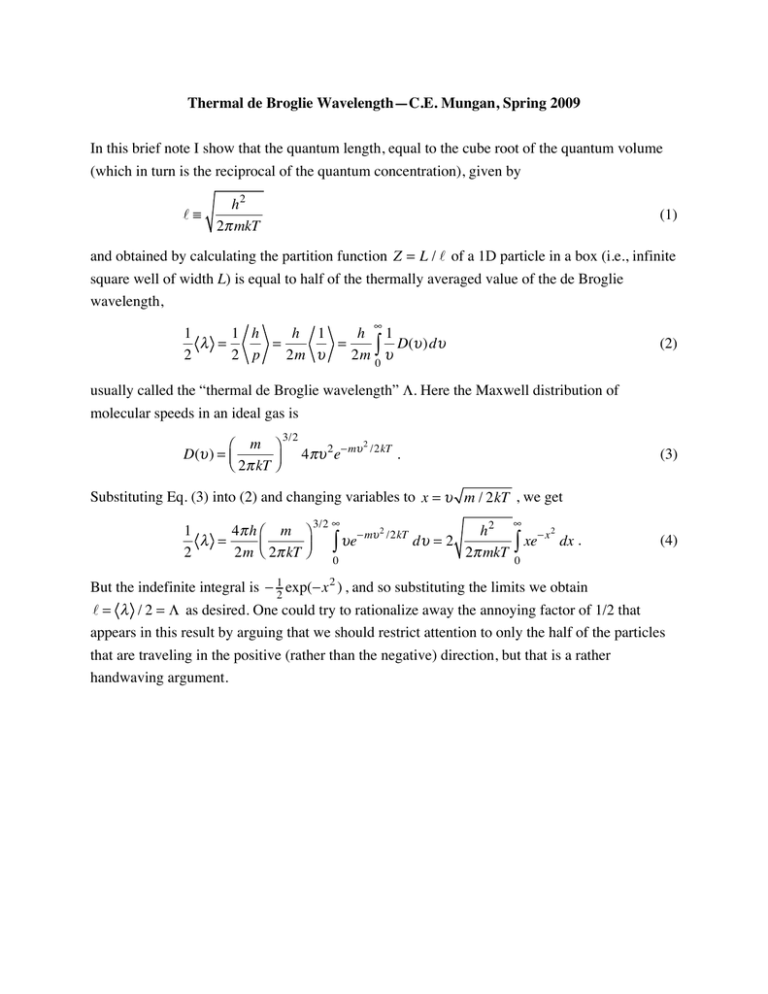
Thermal de Broglie Wavelength—C.E. Mungan, Spring 2009 In this brief note I show that the quantum length, equal to the cube root of the quantum volume (which in turn is the reciprocal of the quantum concentration), given by ≡ h2 2π mkT (1) and obtained by calculating the partition function Z = L / of a 1D particle in a box (i.e., infinite square well of width L) is equal to half of the thermally averaged value of the de Broglie wavelength, ∞ 1 1 h h 1 h 1 λ = = = D(υ )dυ 2 2 p 2m υ 2m ∫0 υ (2) usually called the “thermal de Broglie wavelength” Λ. Here the Maxwell distribution of molecular speeds in an ideal gas is ⎛ m ⎞ D(υ ) = ⎜ ⎝ 2π kT ⎟⎠ 3/2 4πυ 2 e−mυ 2 /2kT . (3) Substituting Eq. (3) into (2) and changing variables to x = υ m / 2kT , we get 1 4π h ⎛ m ⎞ λ = ⎜ ⎟ 2 2m ⎝ 2π kT ⎠ 3/2 ∞ −mυ ∫ υe 0 2 /2kT dυ = 2 h2 2π mkT ∞ ∫ xe − x2 dx . (4) 0 But the indefinite integral is − 12 exp(−x 2 ) , and so substituting the limits we obtain = λ / 2 = Λ as desired. One could try to rationalize away the annoying factor of 1/2 that appears in this result by arguing that we should restrict attention to only the half of the particles that are traveling in the positive (rather than the negative) direction, but that is a rather handwaving argument.
